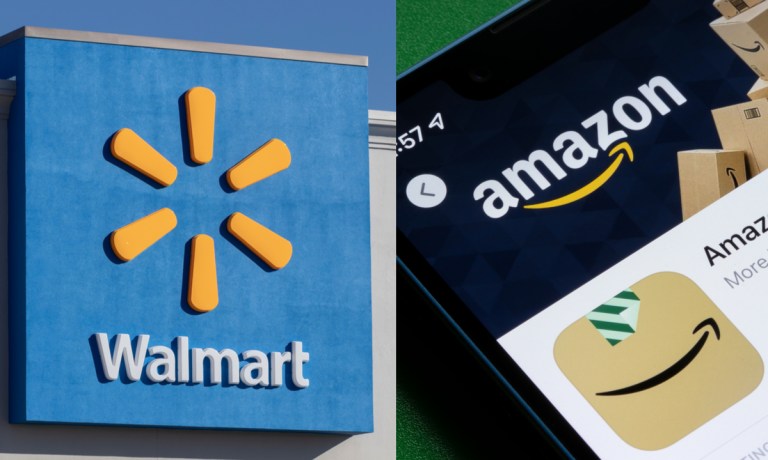Price Wars: Amazon and Walmart Escalate Race to the Bottom

This week in the ongoing battle between retail giants Amazon and Walmart, the two companies are upping their discounting efforts in an effort to secure the loyalty of cost-conscious consumers.
Amazon, for its part, is reportedly taking a tip from such eCommerce giants as Temu and Shein, gearing up to add a section featuring low-cost items shipped from China to overseas consumers. The online marketplace, per the report, aims to onboard sellers in the coming months and begin accepting inventory in the fall.
“We are always exploring new ways to work with our selling partners to delight our customers with more selection, lower prices and greater convenience,” an Amazon spokesperson told Reuters.
Meanwhile, Walmart is going all-in on summer discounting events, following up its recently ended members-only Walmart+ Week with an event that will run from July 8 through July 11, dubbed Walmart Deals, which will be open to all. The latter is, per a company news release, slated to be the retailer’s “largest savings event ever.”
In general, Walmart has a more budget-constrained clientele to cater to than Amazon, per supplemental research from the PYMNTS Intelligence “Tracking the Digital Payments Takeover” study. The findings revealed that 34% of Walmart’s shoppers make less than $50,000 annually, versus just 16% of Amazon’s. Additionally, the study found that 30% of Walmart’s customers live paycheck to paycheck with issues paying their monthly bills, compared to just 19% of Amazon’s.
Notably, the research showed that both companies are gaining share with consumers who make more than $100,000 a year, though Amazon’s gains are more pronounced than Walmart’s.
Overall, consumers’ price sensitivity is becoming a greater and greater challenge for retailers, contributing, for instance, to Walgreens Boots Alliance now considering shuttering as many as 25% of its U.S. retail stores. The Bureau of Economic Analysis recently revised its figures on consumer spending to be lower amid ongoing inflationary challenges. Restaurants are seeing sales declines.
For shoppers, financial instability is on the rise. In fact, the number of consumers living paycheck to paycheck has, per PYMNTS Intelligence research, hit a two-year high.
“One in ten U.S. consumers has an annual income of $50,000 or less, lives paycheck to paycheck and says they have issues paying their monthly bills. Not that they won’t eventually pay them, but each month becomes a game of bill-pay roulette,” PYMNTS CEO Karen Webster observed in a recent feature.
“… That makes the current price/wage/inflation dynamic hit this consumer with a potential double whammy,” Webster added. “Not only do they struggle to make ends meet every month, but they also worry most about their wage and employment security as the labor market shows recent signs of cooling and employment alternatives may not be as plentiful.”
As Amazon and Walmart intensify their discounting strategies to win over budget-conscious consumers, the broader retail landscape faces mounting challenges. Amazon’s move to incorporate low-cost items from China and Walmart’s extensive discount events highlight their efforts to adapt to shifting consumer expectations.
However, the economic strain on consumers remains a pressing concern, with many facing financial instability and rising living costs. As the battle for consumer loyalty continues, the ability of retailers to offer value while addressing these economic realities will be crucial in determining their success.

